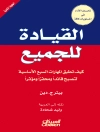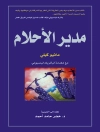The concept of dynamic capabilities, especially in terms of organizational knowledge processes, has become the predominant paradigm for the explanation of competitive advantages. However, major unsolved – or at least insufficiently solved – problems are first their measurement and second their management by concrete managerial options, such as design options of organizational structures. Dynamic Capabilities provides an integrated descriptive model of both dynamic capabilities and organizational structures that allows characterizing, classifying and a comparison. It develops a logic system of a multitude of combinatorial possibilities between their variables, and it develops a complex and integrated system of associated empirically based and qualitatively deduced hypotheses. Therewith, it serves as a terminological and analytical foundation for the identification of knowledge-based dynamic capabilities in organizations and for a targeted design of organizational structures that enable and foster dynamic capability processes such as knowledge transfer and knowledge absorption.
Table of Content
1. Introduction 2. Dynamic Capabilities – Drivers for Organisational Success 3. Organisational Structures – Configurations between Chaos and Order 4. Effects of Organisational Structures on Dynamic Capabilities – A Meta Analysis 5. Conclusions ?
About the author
Philip Cordes-Berszinn wrote his Ph D in the field of organizational theory and strategic management. His exploratory focuses are organizations as complex adaptive systems, knowledge- and competence-based strategic management, organizational designs and dominant management logics as well as path dependencies.












